You may be lucky enough to find old remnants of historic wallpaper in your period house.
But how old is it?
Historic wallpaper is difficult to date. Fashions go round in circles and styles had many revivals over the centuries.
What comes around goes around
Dainty floral and striped designs of the early 19th century became popular again in the early 20th century. They had another resurgence thanks to Laura Ashley in the 1970s.
Below shows an 1820s wallpaper striped design and a similar 1950s Sanderson design.


Likewise, wallpaper manufacturers continued to sell designs that fell out of fashion to cater for more conservative tastes.
In contrast, the avant-garde often embraced new styles which took over 10 years to filter down to the lower classes.
It’s a class thing
The wealthy often set the tone for wallpaper whilst working classes hung on to older styles.
Wallpaper fashions also varied throughout the average house. Timeless smaller patterns prevailed in bedrooms, whilst the latest wallpaper designs took pride of place in drawing rooms and parlours.
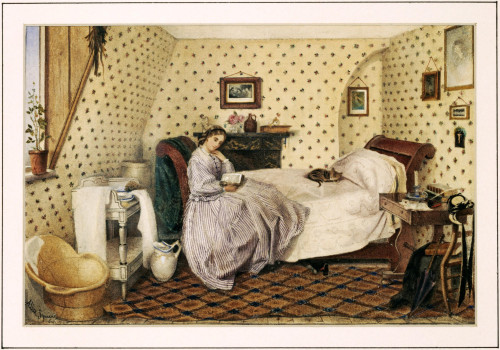
Printing processes in the late 20th century became more precise. Therefore, you can tell later revival wallpapers by their lack of blurred edging, and complex colours and shading. Older cheaper wallpapers also tended to be printed onto thin ‘pulp’ papers prone to yellowing like old newspaper.
I’ve developed an eye for historic wallpapers, having carried out much research on the topic.
Here’s a plotted history covering the changing fashions to help you date historic papers.
Historic wallpaper – 1860-1880
Wallpapers of this period often had a gothic feel with repeat floral or leaf motifs inspired by Pugin’s designs of the 1850s. These below examples are typical.
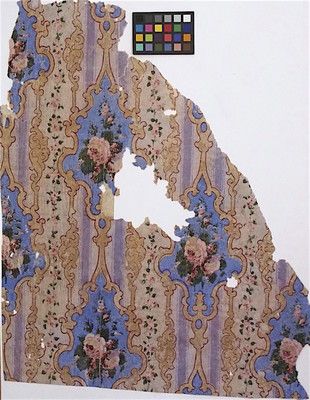
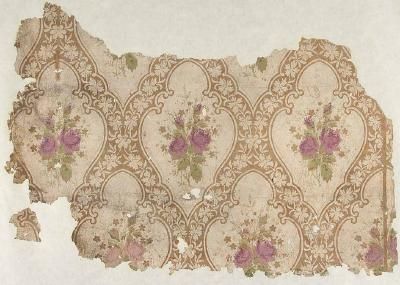
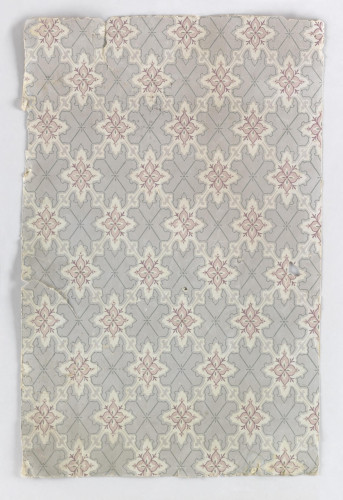
The working classes only tended to wallpaper their parlour in these simple designs. They painted lesser rooms with distemper or limewash until wallpaper became more affordable later in the century.
The middle and upper classes opted for more expensive floral designs based on realism, like this Sanderson design below.
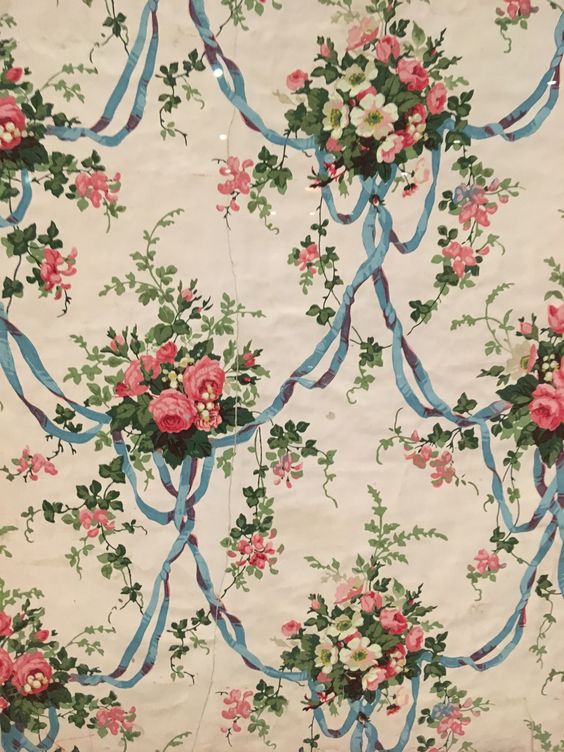
However, William Morris’s rejected this ‘gaudy’ realism from the 1860s. His expensive handblocked wallpapers were stylised and flat in design, appealing to the fashionable rich.
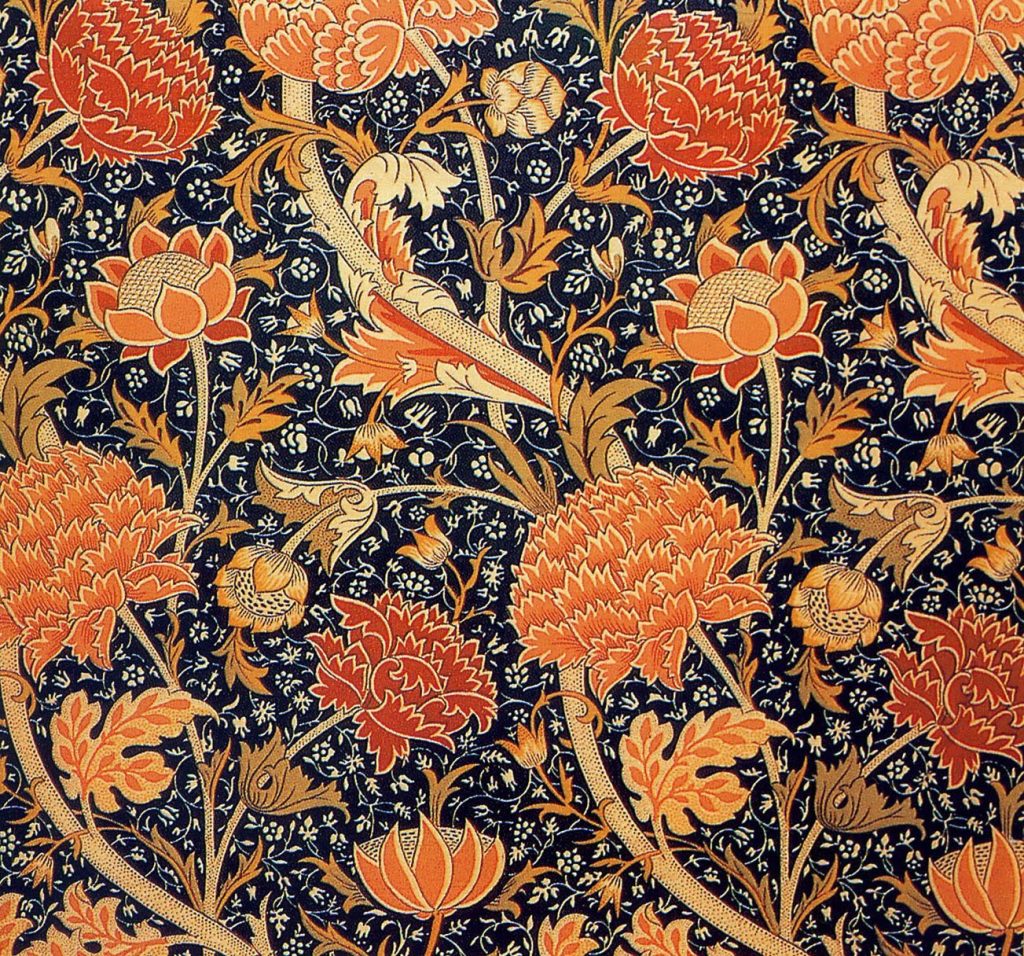
Historic wallpaper – 1880-1900
This period is dominated by large trailing floral designs in flat colour schemes, reminiscent of Morris’s designs from the previous period.
Even my working-class cottage parlour had a wallpaper that is in essence Morris on the cheap! You can buy copies of this Chapel St Floral from Hamilton Weston.
I explain how this was found and recreated in a previous blog.
These examples are from an 1892 English catalogue which only offered trailing floral designs. Clearly, other styles didn’t get a look-in!
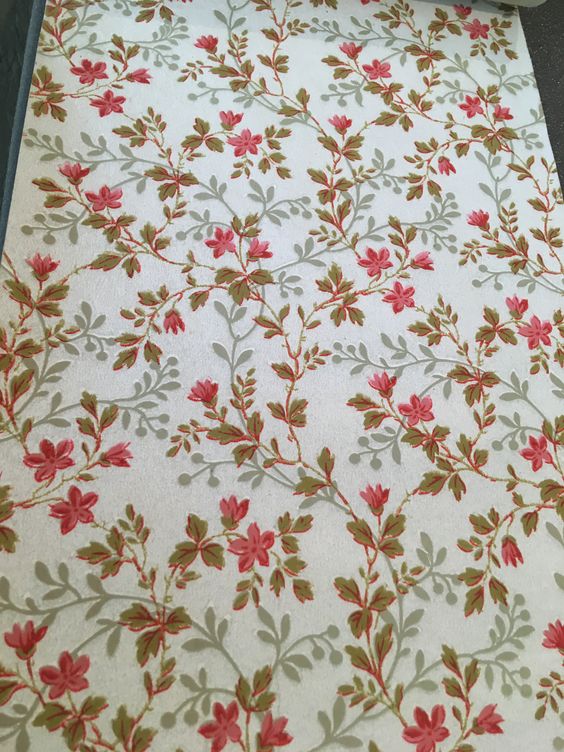
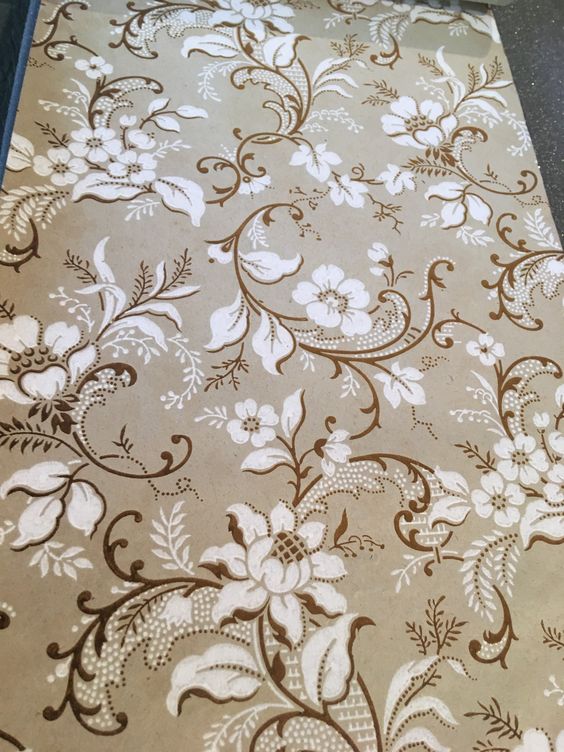
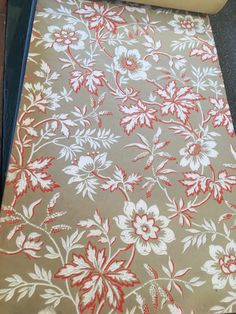
‘Washable’ sanitary wallpaper became popular during this period, particularly in hallways, kitchens and bathrooms.
Designs often replicated tiles or wooden panelling, although very realistic florals for hallways. My kitchen and hallway in the 1890s had a sanitary tile wallpaper.
The mechanical printing techniques used meant the designs were very realistic with complex shading in muted, sombre tones.
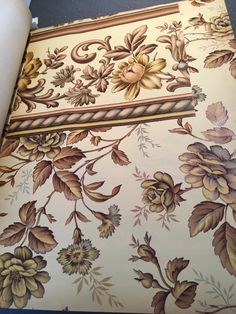
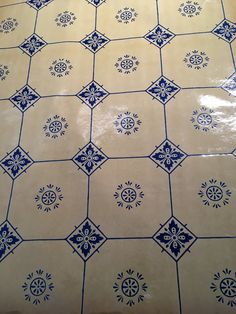
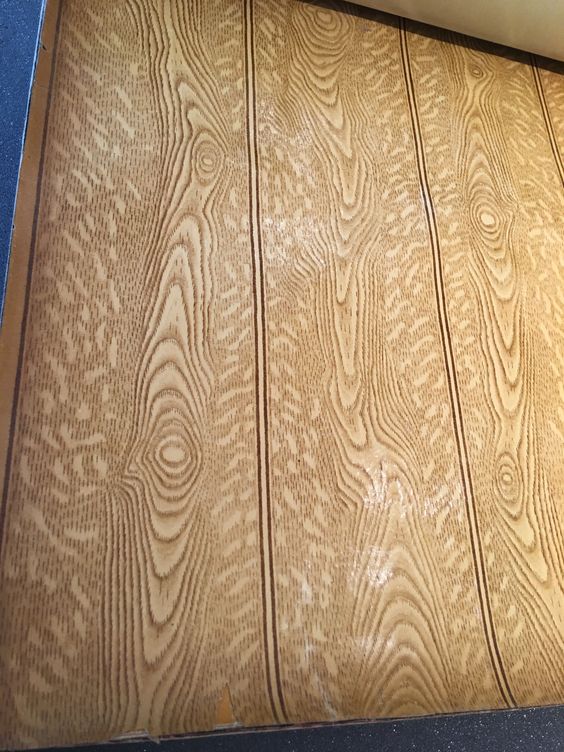
See my Pinterest account for more photos of 1880-1900 wallpapers.
Historic wallpaper – 1900-1910
Art Nouveau swept away the trailing pattern fashion of the late Victorian period. Patterns became more stylised and geometric in design.
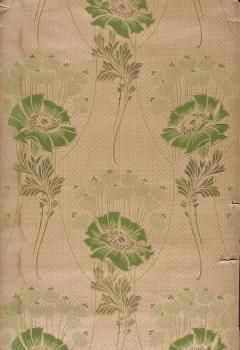

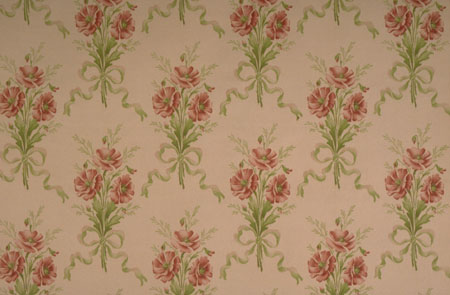
Whilst my 1905 second bedroom wallpaper Chapel Street Rose lacks the stylised Art Nouveau floral detail, its smaller scale and symmetrical motifs are inspired by this design movement.
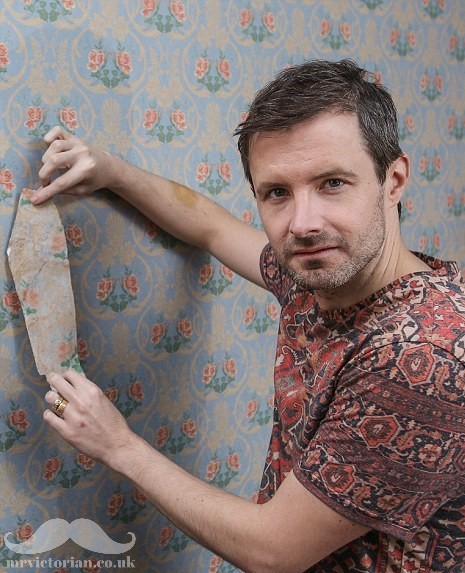
Sanitary wallpapers also embraced the Art Nouveau style.



See my Pinterest account for more photos of 1900-1910 wallpapers.
Historic wallpaper – 1910-1930
The geometric style continued but in a much smaller scale with rhythmic floral bouquets against striped backgrounds. During the First World War, this pattern prevailed in parlour and bedroom wallpapers alike.
The floral bouquets tended to be more stylised and symmetrical in the first half of this period. A hangover from the Art Nouveau period!


These bouquets became more natural after the First World War as the design world turned its back on Art Nouveau.
Nevertheless, the working classes hung on to this style till the late 1920s. Simple pin-striped designs with floral ceiling borders took their place.


In contrast, the wealthy began to reject wallpaper in the 20s and opted for painted walls.
The middle classes compromised with ‘porridge’ or ‘leather’ papers in solid sombre colours with bright Art Deco borders in their living areas, as shown in Mr Straw’s House run by the National Trust.


Likewise, floral wallpaper made by the likes of Sanderson for the middle-class bedroom tended to be dense patterns in muted pastel colours, creating a subtle design background.



See my Pinterest account for more photos of wallpapers.
Historic wallpaper – 1930-1950
The working classes fell of love with patterned wallpaper in their living areas as porridge papers became more widely available in the early 1930s.
They still opted for natural designs for the bedroom. The big changes in these designs were their colours and backgrounds. Trailing floral or leaf patterns in autumnal tones of oranges, reds and browns were all the rage. Small floral bouquets in garish bright colours against stylised trellis backgrounds were also popular.
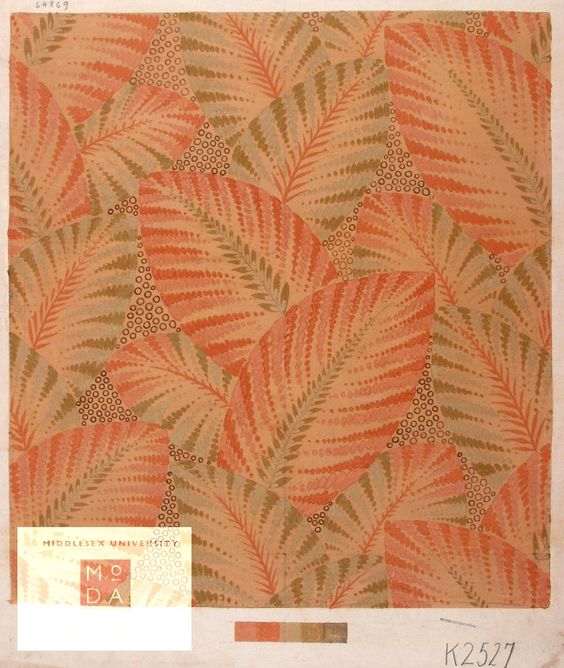
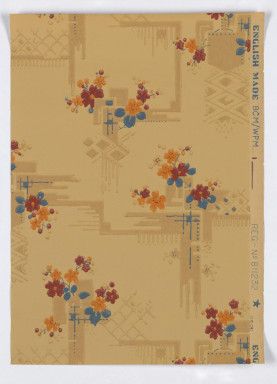
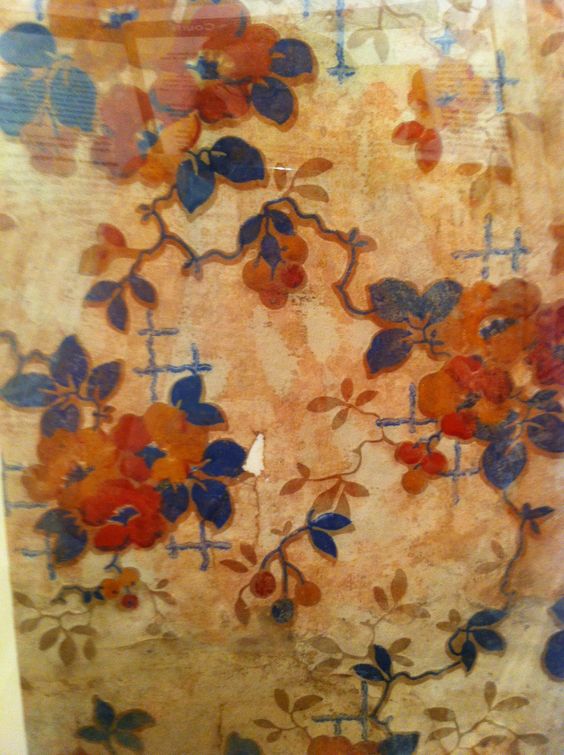
As the 1950s beckoned, floral patterns began to embrace a fresher colour palette of lilacs, yellows and pinks. Very reminiscent of the American refrigerators and cars of the period!
See my Pinterest account for more photos of post 1930 wallpapers.
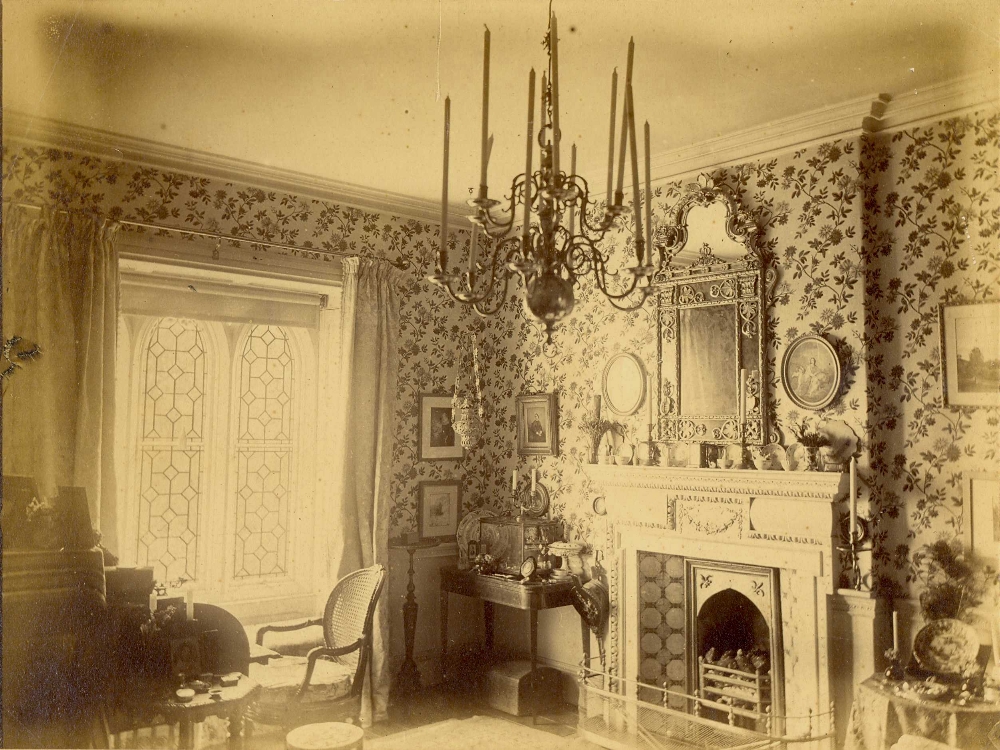
Would you help me date some wallpaper that I have found?
Yes, sure please email me your pics – [email protected]
Hi. I’ve enjoyed your blog, and it came in mind today when I saw this post on digg.com. Analyzing a couple of these could be a great post.
Elgin is my favorite.
https://digg.com/real-estate/link/victorian-houses-zillow-us
Thanks for sharing – some great houses here.
Hi, we have recently uncovered some wallpaper under tongue and groove panelling in a house we have just bought and I’m wondering if you could possibly help date it? Many thanks.
Yes sure, email [email protected]